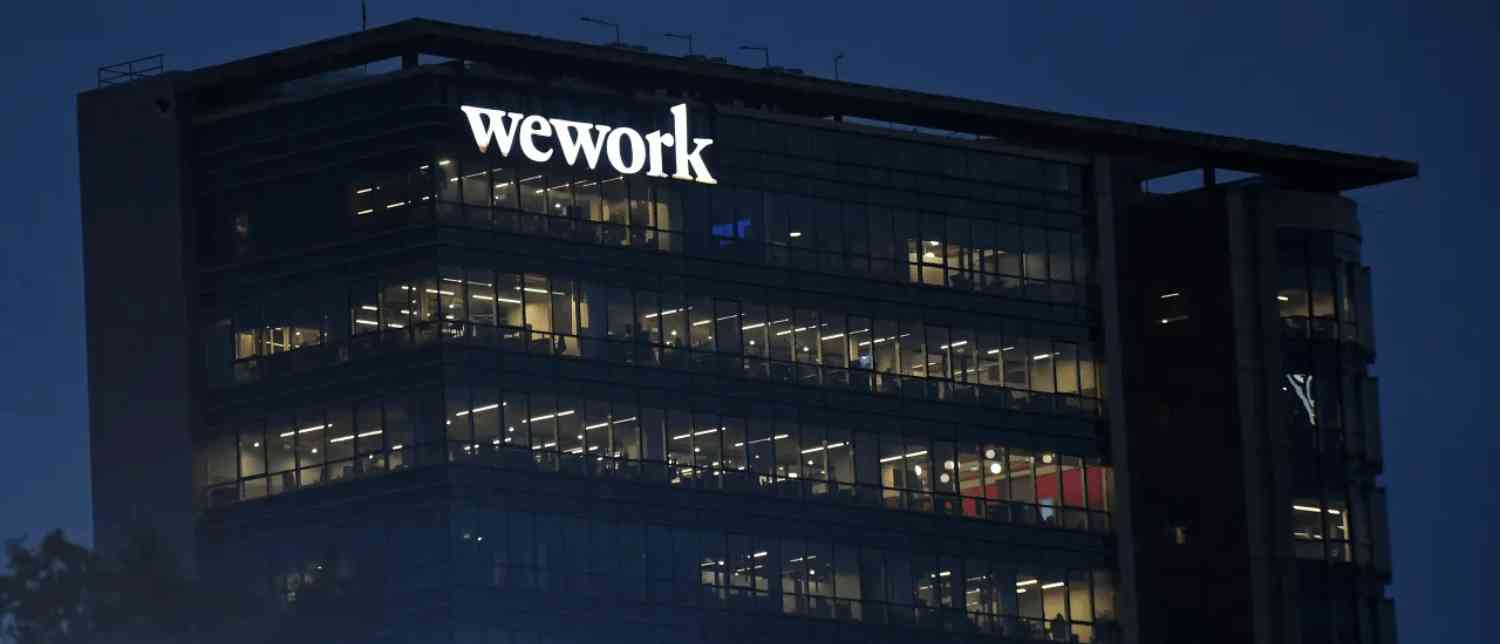The much-awaited initial public offering (IPO) of WeWork India Management Ltd. has run into a wave of skepticism and caution, following serious red flags raised by proxy advisory firm InGovern Research Services Pvt. Ltd. The firm has warned that weak financials, ongoing legal proceedings involving the company’s promoters, and an overdependence on the global WeWork brand pose significant risks to investors.
InGovern’s report has triggered critical questions about the governance structure, financial health, and long-term sustainability of WeWork India — a company that once symbolized the future of flexible workspace solutions in the country.

Legal and Financial Concerns Cloud the IPO
According to InGovern, investors should weigh both the opportunities and risks associated with WeWork India’s business. On one side are the company’s strong brand recognition, scalable business model, and growing demand for flexible workspaces. On the other side, InGovern warns of serious governance proceedings, control weaknesses, and high dependence on brand licensing from WeWork Global.
The proxy firm also highlighted that the entire ₹3,000-crore IPO will go to selling shareholders and promoters, meaning no new funds will flow into the company’s coffers for growth or debt reduction. This Offer for Sale (OFS)-only structure is often seen as a red flag by cautious investors, as it signals a promoter exit rather than a business expansion strategy.
A Deep Dive Into WeWork India’s Financial Challenges
InGovern’s assessment paints a worrying picture of the company’s finances. Despite strong brand visibility, WeWork India has faced consistent losses, negative cash flows, and high lease-related expenses — which consume more than 43% of its total revenues.
As of March 31, 2024, the company’s net worth was negative ₹437.4 crore, a figure that underscores its fragile balance sheet. Interestingly, the net profit for FY2025 was not the result of any operational turnaround but came solely from a deferred tax credit worth ₹286 crore, according to the proxy firm. Without this accounting adjustment, the company would have continued to post losses.
Adding to the concern, occupancy levels remain below industry peers, indicating weaker asset utilization and a slower post-pandemic recovery in demand compared to competitors in the co-working space.
Legal Storm Around Promoters Jitendra and Karan Virwani
The governance risks flagged by InGovern are not merely theoretical. The firm pointed to ongoing criminal proceedings against WeWork India promoters Jitendra Virwani and Karan Virwani, who are being investigated by central agencies for alleged offences including criminal conspiracy, cheating, breach of trust, and money laundering.
Further complicating the IPO, investor Vinay Bansal has filed a writ petition in the Bombay High Court, alleging that the company’s draft red herring prospectus (DRHP) contains misleading statements and major omissions. Bansal’s petition accuses WeWork India of concealing a criminal chargesheet filed against its promoters involving serious economic offences. If proven, such allegations could have material implications on the company’s credibility and investor trust.

Brand Dependency: The Double-Edged Sword
InGovern also raised concerns about WeWork India’s heavy reliance on its global brand license. The company operates under a 99-year licensing agreement with WeWork Global, which effectively ties its fate to the parent brand’s performance and reputation.
The research note warned that any disruption in WeWork Global’s platforms or changes in intellectual property rights or licensing terms — especially in light of the recent reorganization of WeWork Inc. in the United States — could affect the Indian subsidiary’s operations and growth trajectory.
This dependence poses a serious risk, especially considering that WeWork Global itself has faced financial distress and bankruptcy proceedings in the U.S., which, while not directly affecting WeWork India, continue to weigh heavily on investor sentiment.
Promoter Pledges and Control Risks
Adding another layer of risk, the IPO documents reveal that over 53% of WeWork India’s pre-IPO shares, held by its promoter Embassy Group, were pledged as collateral for loans amounting to ₹2,065 crore. Although these shares have reportedly been released, the company has acknowledged that they might need to be re-pledged if the IPO listing faces delays.
Such a scenario could threaten promoter control and investor confidence. As InGovern cautioned, “Continuous shareholder vigilance on pledge status and event triggers post-IPO is advisable.”
Muted Investor Response: A Subdued Market Reception
Despite its strong brand recall, the WeWork India IPO struggled to attract robust investor interest. On its final day of bidding, the IPO was subscribed just 1.05 times, signaling a lukewarm response from the market.
Data from the stock exchanges show that the Qualified Institutional Buyers (QIB) segment was subscribed 1.2 times, while Non-Institutional Investors (NIIs) subscribed only 0.9 times, and the Retail Investors portion saw a weaker response at 0.75 times.
This subdued demand reflects a cautious market sentiment amid an already crowded IPO calendar, which includes large offerings from Tata Capital and LG Electronics.
Market analysts believe that the OFS-heavy structure — where no new capital is raised for business use — has deterred many retail investors. “Retail investors are cautious because the issue is primarily about promoter exits rather than growth capital,” said a Mumbai-based investment advisor. “There’s limited visibility on long-term profitability.”

Grey Market Premium: Flat and Uninspiring
The grey market premium (GMP) for WeWork India’s shares hovered between ₹0–₹5, indicating no major listing gains. According to market observers, this reflects a lack of speculative enthusiasm and valuation pressure in an already liquidity-stretched market.
“The muted GMP reflects investors’ cautious stance. Liquidity is being stretched across multiple big-ticket IPOs, and many prefer to wait for better entry points post-listing,” said Prashanth Tapse, Senior VP (Research) at Mehta Equities. He added, “WeWork India’s financial model raises sustainability questions, given its high lease commitments and exposure to interest rate fluctuations.”
Operational Strengths vs. Structural Challenges
To its credit, WeWork India has maintained steady revenue growth, benefiting from rising demand among startups, freelancers, and large corporates seeking flexible office spaces. The company’s presence in Tier I cities and its ability to customize workspace solutions remain its biggest strengths.
However, analysts argue that these strengths are overshadowed by structural challenges. The company’s heavy dependence on leased properties keeps operating margins under constant pressure. Additionally, rising interest rates and potential volatility in commercial real estate demand add to future uncertainties.
While the bankruptcy of WeWork Inc. in the U.S. has not directly impacted Indian operations, it has clearly dampened investor confidence. Legal and operational complexities, including long-term lease agreements and brand licensing risks, continue to cloud the long-term outlook.
Neutral-to-Weak Listing Expected
Given the flat GMP and subdued subscription levels, analysts predict a neutral or slightly negative listing for WeWork India’s shares unless overall market sentiment improves dramatically. “Investors are now prioritizing profitability and balance sheet strength over brand value,” observed another Mumbai-based market expert.
While WeWork India has stated that it plans to use part of the IPO proceeds to strengthen its balance sheet and expand across Tier I cities, the fact remains that it will not receive any direct funds from the IPO. The entire ₹3,000 crore raised will go to existing shareholders selling their stakes.

IPO Details: Price Band, Lot Size, and Listing Timeline
The WeWork India IPO comprised an Offer for Sale of 46.3 million equity shares, valued at ₹3,000 crore. The price band was fixed between ₹615 and ₹648 per share, with a lot size of 23 shares.
At the upper price band, a retail investor needed a minimum investment of ₹14,904 for one lot. The maximum limit for retail investors was 13 lots (299 shares), requiring an investment of ₹1,93,752.
The subscription period closed on Tuesday, October 6, and the basis of allotment is expected to be finalized on Wednesday, October 8. The company’s shares are set to be credited to demat accounts by October 9 and will list on the BSE and NSE on Friday, October 10.
The IPO’s registrar is MUFG Intime India, and the book-running lead managers include JM Financial, ICICI Securities, Jefferies India, Kotak Mahindra Capital Company, and 360 ONE WAM.
About WeWork India Management
Launched in 2017, WeWork India Management Ltd. is a leading premium flexible workspace operator in India. Over the past three financial years, it has remained the largest operator by total revenue in the country’s co-working sector. The company has played a crucial role in shaping India’s modern office ecosystem, helping redefine workspace solutions for the digital economy.
Despite these achievements, the company’s path to sustainable profitability remains uncertain. With financial losses, governance controversies, and an OFS-only IPO structure, WeWork India faces a steep road ahead to convince investors that its growth story can endure the turbulence.
Final Thoughts
The WeWork India IPO has turned out to be a litmus test for investor appetite in India’s flexible workspace market. While the brand enjoys strong recognition and a large footprint, the financial fragility, legal controversies, and structural dependencies highlighted by InGovern have cast a long shadow over its market debut.
As the company prepares for its listing, all eyes will be on whether post-listing momentum can restore investor faith — or if the muted response will mark the start of a more cautious phase for India’s once-booming co-working sector.
With inputs from agencies
Image Source: Multiple agencies
© Copyright 2025. All Rights Reserved. Powered by Vygr Media.

























